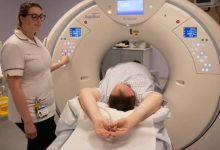How long does it take to become a Neurologist?
Contents
It takes at least 12 years to become a neurologist.
- Bachelor’s Degree
Depending on the school you attend, your bachelor’s program can take anywhere between 3-4 years. For students who want to become neurologists, it is important to take classes in biology, chemistry, physics, biochemistry and neuroscience. A 4-year degree in one of these majors will help prepare you for medical school.
While your undergraduate major doesn’t have to be in a science field, most students find that taking courses like math and English helps them develop useful skills.
It also helps if they have spent time shadowing a doctor or working in a hospital during their undergraduate years. This hands-on experience gives them an idea of what it’s like to work as a neurologist. It also helps med schools decide whether or not the student is cut out for such a demanding job.
Most med schools prefer students with high GPAs (between 3 and 4.5) and scores from the MCAT (Medical College Admission Test). Some universities offer pre-med programs or classes that help prep students for medical school admissions tests like the MCATs.
Medical School
After you’ve completed four years of undergraduate college education, you will still have to attend medical school. Medical school is four years total, and is divided into two parts: two years of classroom education and two years of clinical rotations.
Your first two years will consist mainly of studying medical sciences, such as anatomy, pharmacology (the study of drugs), biochemistry, pathology (the study of diseases) and epidemiology (the study of how diseases affect populations).
In your third year, you’ll move on to clinical rotations in a hospital or private practice office setting. You’ll take one-month rotations in emergency medicine, internal medicine, obstetrics/gynecology, pediatrics and general surgery. During the final year of medical school, you’ll be able to choose an area that interests you most for elective rotations.
You can apply to medical school after completing three years of undergraduate college education by taking the MCAT exam before applying for admission at a college or university with an accredited medical program. When applying for admission to a graduate program in neurology, be prepared for a competitive application process that includes interviews with programs that accept your application packet.
Internship and Residency
The next step for neurologists is to complete their residency. The typical length of a neurology residency is three years. During this time, you will have the opportunity to become an expert in fields such as neurosurgery, physical therapy and genetics.
After your internship and residency are complete, you will get licensed to practice as a neurologist by passing a state-administered exam. Once you are ready to open your own practice, contact your state’s licensing authority for additional information on how to get licensed as a doctor in your area. Finally, after obtaining your license, becoming board certified is the last required step in officially becoming a neurologist. To maintain your certification throughout the rest of your career, you will be responsible for keeping up with the latest advances in neurological treatment by continuing education courses and conferences that specialize in this field of medicine.
Related Post:Is a Finance Degree worth It?
State Licensing
It’s important to note that the process for applying for a license to practice neurology will be different in each state. Ultimately, your ability to practice medicine legally in any state is regulated by the medical board of that state. For more information about licensing and credentialing requirements in your specific state, contact the medical board there.
However, some of the general steps required for obtaining licensure as a neurologist are:
- Completion of an approved medical school program and residency program with a focus on neurology
- Medical licensing examination (many states require candidates to pass all three parts of the USMLE or COMLEX)
- Criminal background check (some states require this prior to application)
Board Certification
Board certification is a voluntary process by which a health care professional demonstrates knowledge of his or her specialty. In the case of an aspiring neurologist, this knowledge is demonstrated by passing an exam administered by the American Board of Psychiatry and Neurology (ABPN). The exam is offered twice each year, in February and August, and consists of two parts. Passing both parts proves that the candidate has mastered the critical skills required to practice neurology safely and effectively. Because medicine is constantly evolving, it’s important for practicing physicians to keep their skills sharp. By renewing their board certification every ten years, they can show that they are current with recent practices and trends in the field.
Who is a Neurologist
A neurologist is a medical doctor who diagnoses and treats disorders of the nervous system. This complex system includes the brain, the spinal cord, a network of nerves that connect to all parts of the body, and the muscles.
A neurologist is a medical doctor who diagnoses and treats disorders of the nervous system. This complex system includes the brain, the spinal cord, a network of nerves that connect to all parts of the body, and the muscles.
Neurological disorders are common: they affect one in six people worldwide. They are also serious; they are the world’s leading cause of disability.
Doctors who specialize in diagnosing and treating neurological conditions are called neurologists. They may work in a variety of settings – hospitals, private practices or research labs.
Related Post:What is University of Dallas Acceptance Rate?
Some problems treated by neurologists include
Neurologists are physicians who specialize in the diagnosis and treatment of disorders that affect the nervous system and brain, such as epilepsy, headaches, Parkinson’s disease, Tourette’s syndrome and others. When people say they have a “headache,” they really mean that they have a problem with their brain (a neurologist can make a definitive diagnosis). There are many different types of headache; you may be suffering from migraines if you experience severe pain rapidly moving around your head or spreading to other parts of your body. If this occurs without warning, then you have migraines. The two types are tension headaches and cluster headaches. Cluster headaches are chronic headaches that occur in clusters lasting four to thirty minutes each day for weeks at a time. They can be so painful that sufferers try to take their own lives out of desperation. You may also suffer from “full” migraines in which your head feels like it is about to burst open with pressure; these likely occur when blood vessels near the surface of your eye become enlarged due to high blood pressure. It is important to know whether you suffer from migraines because treatments vary depending on what type you have.
Headaches
We are a little biased on this one, but the truth is that neurologists are the experts in diagnosing and treating headaches. If you have been struggling with finding an effective way to manage your headaches, it’s time to see a neurologist. Even if you already have seen another doctor for your headaches, it can be helpful to see a neurologist as well. A neurologist will be able to evaluate you from scratch and help find a solution that works for you. From lifestyle changes to medications or even procedures, a neurologist is trained in many options for managing headache disorders.
Parkinson’s disease
Neurologists treat people with conditions of the central nervous system, which includes the brain and spinal cord. They also treat people with disorders of the peripheral nervous system, which includes all the other nerves in your body. Some neurologists focus on specific types of diseases such as Parkinson’s disease.
Parkinson’s disease is a degenerative disorder of the central nervous system that often impairs the sufferer’s motor skills, speech, and other functions. It is characterized by muscle rigidity, tremor, a slowing of physical movement (bradykinesia), and in extreme cases, a loss of physical movement (akinesia). The primary symptoms are the results of decreased stimulation of the motor cortex by the basal ganglia. Early in the course of the disease, sufferers experience few problems with cognitive function or thinking.
Tourette’s syndrome
Tourette’s syndrome is a neurological disorder that causes involuntary muscle movements and verbalizations. It can be treated, but not cured. For example, a person with Tourette’s may exhibit repetitive eye blinking or facial twitching. It does not affect intelligence and many people with this condition live normal lives.
Many people associate Tourette’s syndrome with coprolalia—the use of inappropriate words—but in fact only 10 percent of sufferers experience this symptom. Stress does not cause Tourette’s syndrome, although stress can make the symptoms worse, just like most other medical conditions. Studies have shown that it affects boys more than girls at a rate of three to one. While there are no drugs to prevent or cure Tourette’s, several medications have proven effective in limiting symptoms in children and adults who experience uncomfortably high levels of tics.
Back pain
Back pain is all too common. In fact, up to 80% of people will experience back pain some time during their lives.
Many factors can contribute to your back pain, from poor posture and heavy lifting to osteoporosis and spinal stenosis (a narrowing of the spinal canal that puts pressure on the spinal cord). If you have back pain that does not go away with over-the-counter medication or other at-home treatment, a neurologist may help diagnose it.
Neurologists are experts in diagnosing and treating conditions related to your brain, spine, and nerves throughout your body. They specialize in diseases such as arthritis and fibromyalgia as well as disorders like scoliosis—all of which can cause back pain. The right diagnosis is the first step toward easing your discomfort.
A neurologist may order an imaging test such as an X-ray or MRI scan to get a better look at what’s happening in the area where you’re experiencing discomfort or lack of function. This will help him or her determine what treatment may work best for you.
For instance, muscle relaxers are often prescribed for lower back spasms caused by injury; however, in some cases physical therapy may be more effective than medication for treating this condition. A neurologist will evaluate which approach might be best for you based on factors like your age and severity of symptoms.
Neurologists are experts in diseases of the nervous system.
A neurologist is a physician who treats diseases of the nervous system.
Neurologists are not brain surgeons. Most neurologists do not perform surgery. However, neurologists may treat patients before and after surgery.
Neurologists are not researchers, although some neurologists do research in addition to caring for patients.
Neurologists are doctors, but they aren’t psychiatrists or psychologists. People often look at neurology as the intersection between medicine and psychiatry — a place where psychiatry meets physical problems instead of psychological ones. This is partially true: physicians must be able to diagnose their patients’ conditions using observation, questions and answers, and conversations about symptoms (just like psychiatrists), whereas psychologists work primarily with talk therapy—with no need for medical school training at all! Neurology isn’t quite that simple though; many diseases affecting our brains also affect other parts of our bodies as well so that studying these disorders requires an understanding across multiple disciplines like psychology for example.”:
Related Post:How much do Orthodontist make?









